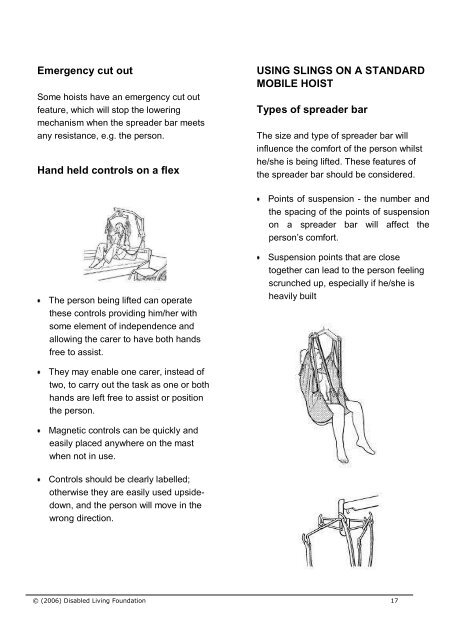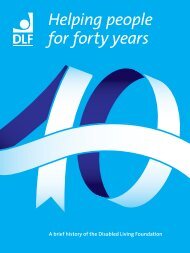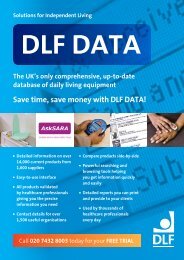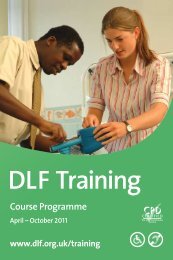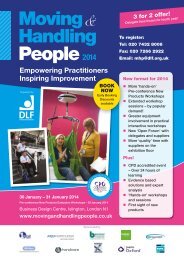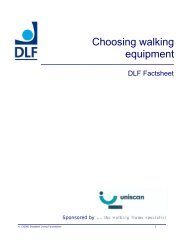DLF Factsheet 'Choosing a Mobile Hoist' - Disabled Living Foundation
DLF Factsheet 'Choosing a Mobile Hoist' - Disabled Living Foundation
DLF Factsheet 'Choosing a Mobile Hoist' - Disabled Living Foundation
You also want an ePaper? Increase the reach of your titles
YUMPU automatically turns print PDFs into web optimized ePapers that Google loves.
Emergency cut out<br />
Some hoists have an emergency cut out<br />
feature, which will stop the lowering<br />
mechanism when the spreader bar meets<br />
any resistance, e.g. the person.<br />
Hand held controls on a flex<br />
The person being lifted can operate<br />
these controls providing him/her with<br />
some element of independence and<br />
allowing the carer to have both hands<br />
free to assist.<br />
They may enable one carer, instead of<br />
two, to carry out the task as one or both<br />
hands are left free to assist or position<br />
the person.<br />
Magnetic controls can be quickly and<br />
easily placed anywhere on the mast<br />
when not in use.<br />
Controls should be clearly labelled;<br />
otherwise they are easily used upsidedown,<br />
and the person will move in the<br />
wrong direction.<br />
USING SLINGS ON A STANDARD<br />
MOBILE HOIST<br />
Types of spreader bar<br />
The size and type of spreader bar will<br />
influence the comfort of the person whilst<br />
he/she is being lifted. These features of<br />
the spreader bar should be considered.<br />
Points of suspension - the number and<br />
the spacing of the points of suspension<br />
on a spreader bar will affect the<br />
person’s comfort.<br />
Suspension points that are close<br />
together can lead to the person feeling<br />
scrunched up, especially if he/she is<br />
heavily built<br />
© (2006) <strong>Disabled</strong> <strong>Living</strong> <strong>Foundation</strong> 17


